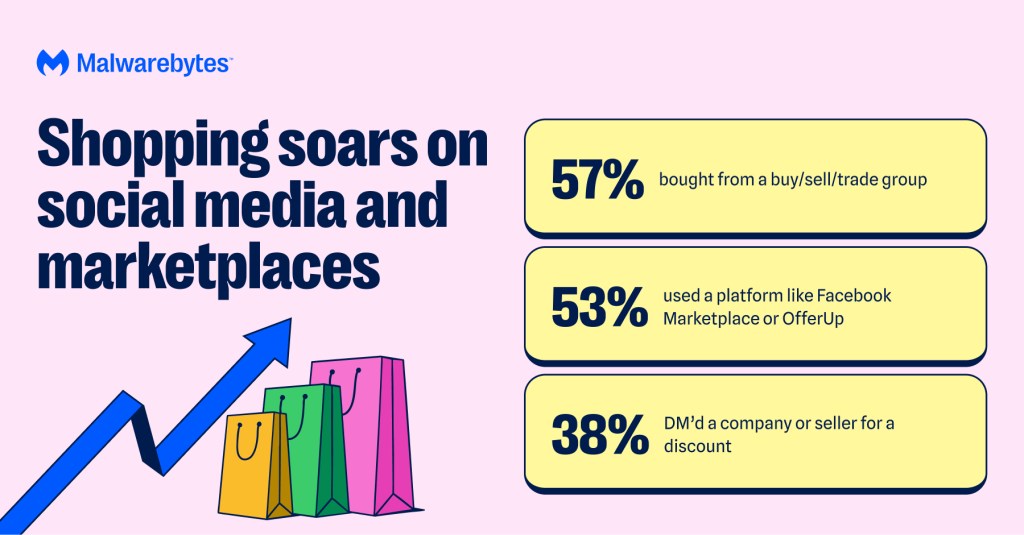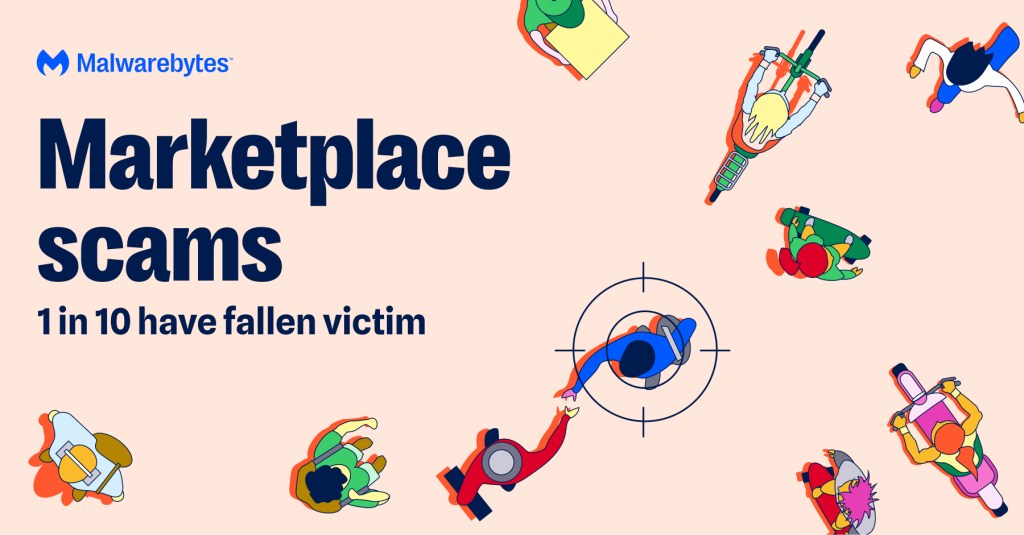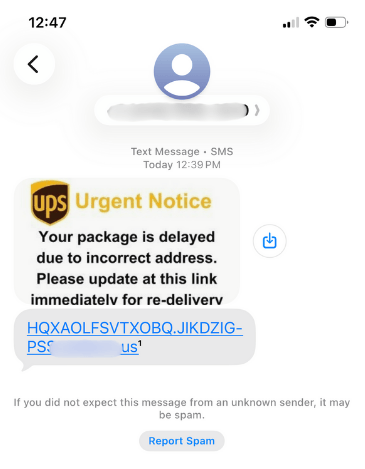Every year, shoppers get faster, savvier, and more mobile. We compare prices on the go, download apps for coupons, and jump on deals before they disappear. But during deal-heavy periods like Black Friday, Cyber Monday, and the December shopping rush, convenience can work against us.
Quick check-outs, unknown websites, and ads promising unbeatable prices make shoppers easy targets.
Shopping scams can steal money or data, but they also steal peace of mind. Victims often describe a mix of frustration, embarrassment, and anger that lasts for a long time. And during the holidays when you’re already stretched thin, the financial and emotional fallout lands harder, spoiling plans, straining trust, and adding anxiety to what should be a joyful and restful time.
The data for deals exchange
During the holidays, deal-chasing behavior spikes. Nearly 9 in 10 mobile consumers hand over emails or phone numbers in the name of savings—often without realizing how much personal data they’re sharing.
- 79% sign up for promotional emails to get offers.
- 66% download an app for a coupon, discount, or free trial.
- 58% give their phone number for texts to get a deal.
This constant “data for deals” exchange normalizes risky habits that scammers can easily exploit through fake promotions and reward campaigns.
The Walmart gift card scam
You’ve probably seen it. A bright message claiming you’ve qualified for a $750 or $1,000 Walmart gift card. All you have to do is answer a few questions. It looks harmless enough. But once you click, you find yourself in a maze of surveys, redirects, and “partner offers.”

The scammers aren’t actually offering a free gift card. It’s a data-harvesting trap. Each form you fill out collects your name, email, phone number, ZIP code, and interests, all used to build a detailed profile that’s resold to advertisers or used for more scams down the line.
These so-called “holiday reward” scams pop up every year, promising gift cards, coupons, or cash-back bonuses, and they work because they play on the same instinct as legitimate deals: the urge to grab a bargain before it disappears.
Scams show up wherever people shop. As holiday buying moves across social feeds, messaging apps, and mobile alerts, scammers follow the traffic.
Social platforms have become informal online malls: buy/sell groups, influencer offers, and limited-time stories all blur the line between social and shopping.

- 57% have bought from a buy/sell/trade group
- 53% have used a platform like Facebook Marketplace or OfferUp
- 38% have DM’d a company or seller for a discount
It’s a familiar environment, and that’s the problem. Fake listings and ads sit right beside real ones, making it hard to tell them apart when you’re scrolling fast. Half of people (51%) encounter scams on social media every week, and 1 in 4 (27%) see at least one scam a day.
Shopping has become social. It’s quick, conversational, and built on trust. But that same trust leads to some of the most common holiday scams.
A little skepticism when shopping via your social feeds can go a long way, especially when deals and deadlines make everything feel more urgent.
Three scams shoppers should watch out for
Exposure to scams is baked into the modern shopping experience—especially across social platforms and mobile marketplaces. Here are three common types that surge during the holidays.

Marketplace scams
Marketplace scams are one of the most common traps during the holidays, precisely because they hide in plain sight. Shoppers tend to feel safe on familiar platforms, whether that’s a buy-and-sell group, a resale page, or a trusted marketplace app. But fake listings, spoofed profiles, and too-good-to-miss deals are everywhere.
Around a third of people (36%) come across a marketplace scam weekly (15% are targeted daily), and roughly 1 in 10 have fallen victim. Younger users are hit hardest: Gen Z and Millennials are the most impacted age group—70% of victims are Gen Z/Millennial (vs 57% victims overall). They also are more likely to lose money after clicking a fake ad or transferring payment for an item that never arrives. The result is a perfect storm of trust, speed, and urgency. The very ingredients scammers rely on.
Marketplace scams don’t just drain bank accounts, they also take a personal toll.
Many victims describe the experience as financially and emotionally exhausting, with some losing money they can’t recover, others discovering new accounts opened in their name, and some even locked out of their own. For others, the impact spreads further: embarrassment over being tricked, stress at work, and health problems triggered by anxiety or sleepless nights.

Postal tracking scams
Postal tracking scams are already mainstream, but the holidays invite particular risk. With shoppers checking delivery updates several times a day, it’s easy to click without thinking.
Around 4 in 10 people have encountered one of these scams (62%), and more than 8 in 10 track packages directly from their phones (83%), making mobile users a prime target. Again, younger shoppers are the most impacted with 62% of victims being either Gen Z or Millennials (vs 57% of scam victims overall).
The messages look convincing: real courier logos, legitimate-sounding tracking numbers, and language that mirrors official updates.

A single click on what looks like a delivery confirmation can lead to a fake login page, a malicious download, or a request for personal information. It’s one of the simplest, most believable scams out there—and one of the easiest to fall for when you’re juggling gifts, deadlines, and constant delivery alerts.

Ad-related malware
The hunt for flash sales, coupon codes, and last-minute deals can make shoppers more exposed to malicious ads and downloads.
More than half of people (58%) have encountered ad-related malware (or, “adware”, which is software that floods your screen with unwanted ads or tracks what you click to profit from your data), and over a quarter have fallen victim (27%). Gen Z users who spend the most time online are the age bracket that are most susceptible to adware, at nearly 40%.
Others scams involve malvertising, where criminals plant malicious code inside online ads that look completely legitimate, and just loading the page can be enough to start the attack. Malvertising too tends to spike during the holiday rush, when people are scrolling quickly through social feeds or searching for discounts. Forty percent of people have been targeted by malvertising and 11% have fallen victim. Adware targets 45% of people, claiming 20% as victims.
Fake ads are designed to look just like the real thing, complete with familiar branding and countdown timers. One wrong tap can install a malicious “shopping helper” app, redirect to a phishing site, or trigger a background download you never meant to start. It’s a reminder that even the most legitimate-looking ads deserve a second glance before you click.
Why shoppers drop their guard
The holidays bring joy but also a lot of pressure. There’s the financial strain, endless to-do lists, and that feeling that you don’t have enough time to do it all. Scammers know this, and use urgency, stress, and even guilt to make you click before you think. And when people do fall for a scam, the financial impact isn’t the only upsetting thing. Victims of scams are often embarrassed and blame themselves, and then have the stress of picking up the pieces.
Most shoppers worry about being scammed (61%) or losing money (73%), but with constant notifications, flashing ads, and countdown timers competing for attention, even the most careful shoppers can click before they check. Scammers count on that moment of distraction—and they only need one.
Mobile-first shopping has become second nature, and during the holidays it’s faster and more frantic than ever. Fifty-five percent of people get a scam text message weekly, while 27% are targeted daily.
Downloading new apps, checking delivery updates, or tapping limited-time offers all feel routine. Nearly 6 in 10 people say that downloading apps to buy products or engage with companies is now a way of life, and 39% admit they’re more likely to click a link on their phone than on their laptop.
How to shop smarter (and safer) this holiday
Most people don’t have protections that match the pace of holiday shopping, but the good news is, small steps make a big difference.
- Keep an eye on your accounts. Make it a habit to glance over your bank or credit statements during the holidays. Spotting unexpected activity early is one of the simplest ways to stop fraud before it snowballs.
- Add strong login protections. Use unique passwords, or a passkey, for your main shopping and payment accounts, and turn on two-factor authentication wherever it’s offered. It takes seconds to set up and can stop someone from breaking in, even if they have your password.
- Guard against malicious ads and fake apps. Scam sites and pop-ups tend to spike during busy shopping periods, hiding behind flash sales or delivery updates. Malwarebytes Mobile Security and Malwarebytes Browser Guard can block these pages before they load, keeping scam domains, fake coupons, and malvertising out of sight and out of reach.
- Protect your identity. Be careful about where you share personal details, especially for “free” offers or surveys. If something asks for more information than it needs, it’s probably not worth the risk. Using identity protection tools adds an extra layer of defense if your data ever does end up in the wrong hands.
A few minutes of setup now can save you days of stress later. Shop smart, stay skeptical, and enjoy the season safely.

The research in this article is based on a March 2025 survey prepared by an independent research consultant and distributed via Forsta among n=1,300 survey respondents ages 18 and older in the United States, UK, Austria, Germany and Switzerland. The sample was equally split for gender with a spread of ages, geographical regions and race groups, and weighted to provide a balanced view.
We don’t just report on scams—we help detect them
Cybersecurity risks should never spread beyond a headline. If something looks dodgy to you, check if it’s a scam using Malwarebytes Scam Guard, a feature of our mobile protection products. Submit a screenshot, paste suspicious content, or share a text or phone number, and we’ll tell you if it’s a scam or legit. Download Malwarebytes Mobile Security for iOS or Android and try it today!
